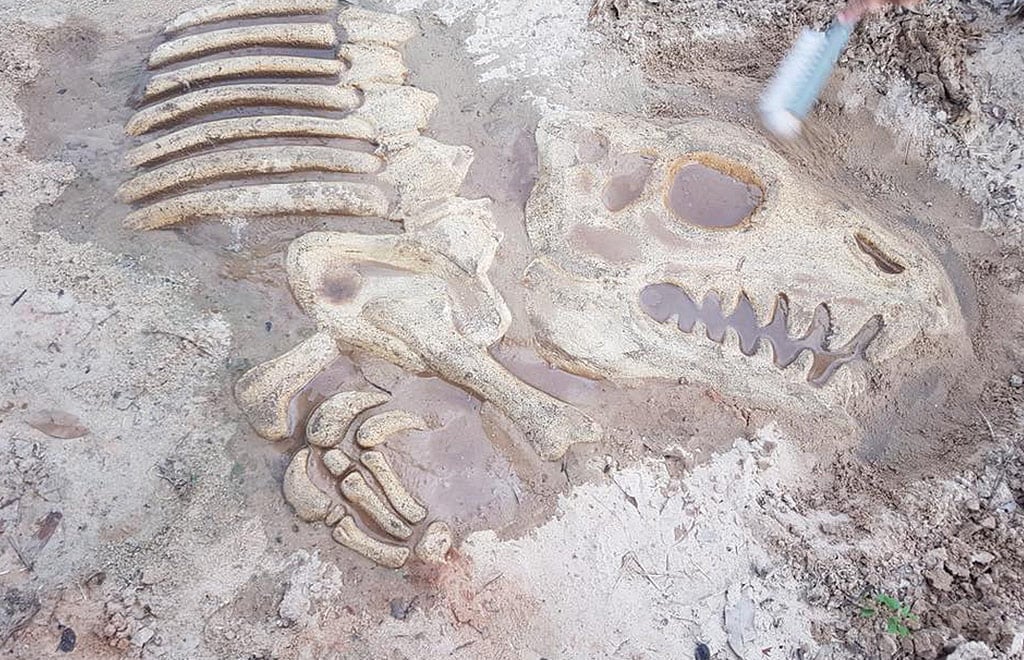
Broome ‘fossil’ – pretend
A ‘body fossil’ is the term used to describe any part of an organism that gets preserved in the geological record. Body fossils include things like bones, teeth, eggs, shells, and soft tissues such as skin, feathers, hair, wood, etc.
A ‘trace fossil’, on the other hand, is any trace left by an animal or plant. Trace fossils are far more numerous than body fossils, and include things like footprints, scratches, burrows, feeding marks, bodily impressions etc.
A special type of trace fossil occurs when all or part of an organism gets encased in sediment. The organism might decay and disappear, but its impression remains and is referred to as a ‘natural mould’. If the space in the mould gets filled with sediment, this may create a natural cast of the original organism, or part of it.
Coprolites (fossilised poo) are another special category of trace fossils
